Have you ever considered growing your own tea herbs?
That's right—imagine a fresh, hot cup of tea brewed from herbs handpicked from your very own garden. There's nothing quite like it.
We compiled a list of 10 plants that will help you start your very own tea garden. Plus, we're throwing in some easy tips for harvesting, brewing, drying, and storing your tea leaves.
1. Chamomile
This daisy-like plant is not just pleasing to the eye; it's a powerhouse of benefits. It's known to alleviate insomnia, boost immunity, soothe stomachache, and reduce stress.

It has a lovely apple-like flavor that's simply perfect for a calming night tea.
Harvesting & Brewing: Gently pluck the flowers, being careful not to damage the delicate petals.
Steep a handful of chamomile flowers in hot water for about 5 minutes, allowing the subtle, sweet flavor to come out.
Drying & Storing: After harvesting, lay the flowers out on a paper towel or a dry cloth in a well-ventilated space out of direct sunlight.
They will need about 1–2 weeks to air dry completely. You'll know they're ready when the petals are crisp to the touch.
Store the dried chamomile flowers in an airtight container, away from heat and light to preserve their soothing properties and flavor.
2. Peppermint
Peppermint tea is refreshing and can aid digestion, relieve headaches, and enhance focus and memory.
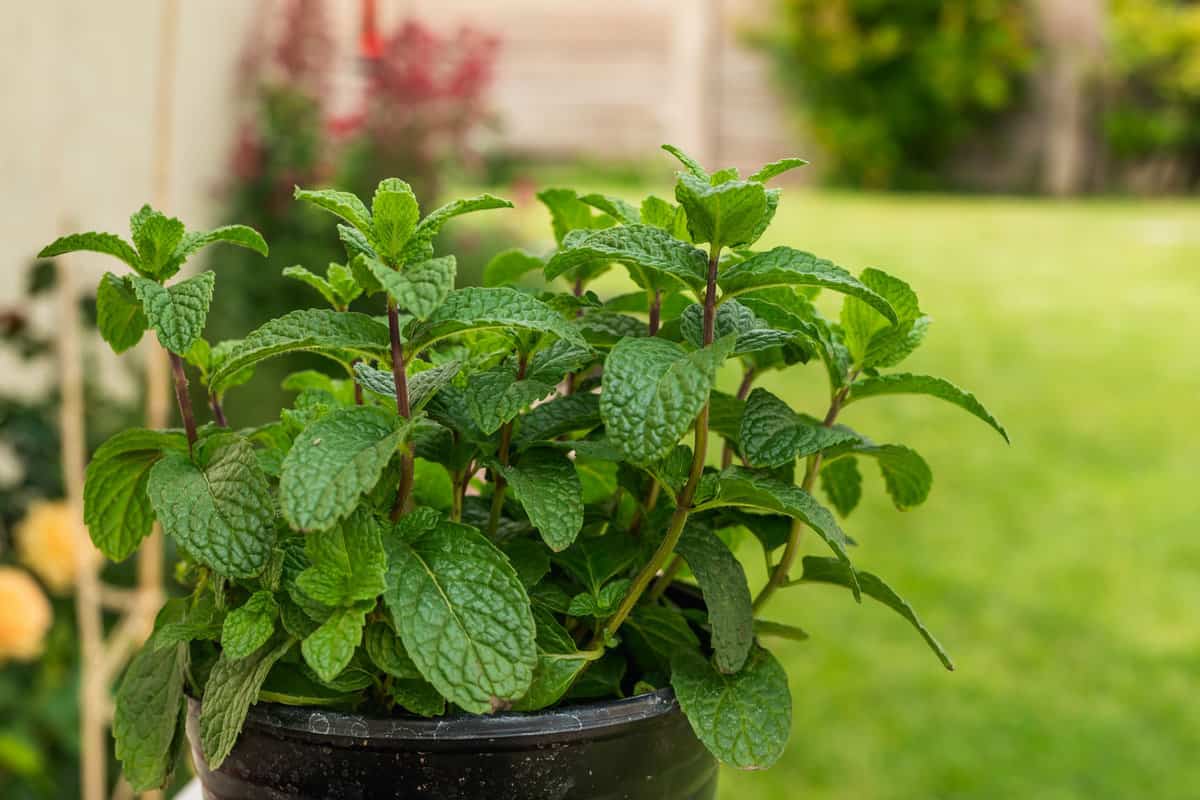
Harvesting & Brewing: For the most aromatic brew, harvest peppermint just before it flowers, when the leaves are brimming with essential oils.
Snip the stems off right above the first set of leaves. Steep a handful of these aromatic leaves in boiling water for about 10 minutes to fully unlock their refreshing flavor and beneficial properties.
Drying & Storing: After harvesting, tie bunches of peppermint stems together at the base and hang them upside down in a dry, dark place.
This could take a week or two, but you'll know they're ready when the leaves become crisp and easily crumble between your fingers.
Store the dried leaves in an airtight container, ensuring they retain their potent minty freshness.
3. Lemon Balm
Lemon balm tea is known for its soothing properties. This aromatic herb can reduce stress, anxiety, and aid in sleep. It can also ease digestive problems and relieve PMS symptoms.
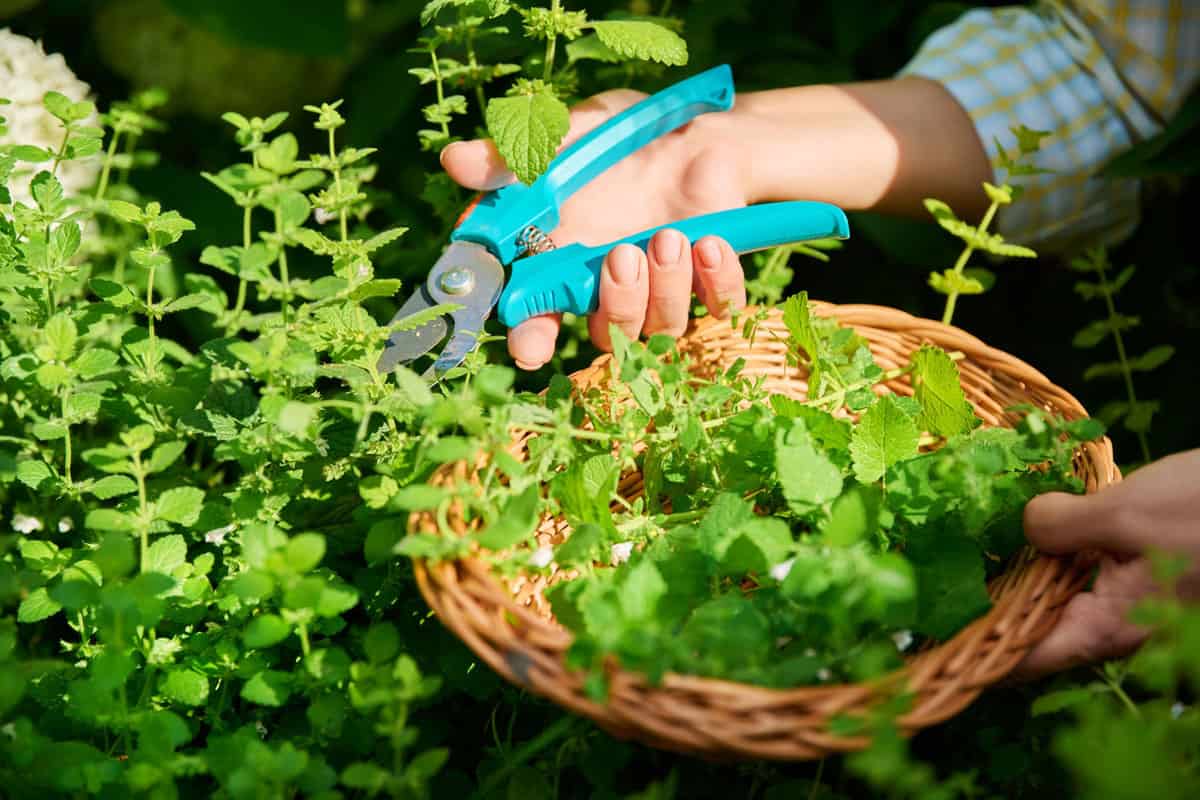
Harvesting & Brewing: Harvest lemon balm leaves any time, but for the strongest flavor, pick them just before the plant flowers. Steep a handful in hot water for about 5 minutes.
Drying & Storing: To dry lemon balm leaves, spread them out in a single layer in a dark, dry place. This will help them retain their color and aromatic properties.
Once completely dry, store them in an airtight container away from sunlight and heat. Proper storage will ensure your lemon balm leaves remain potent and flavorful for your relaxing tea time.
4. Lavender
Lavender makes a fragrant and calming brew that's a great stress reliever. This plant not only calms your nerves, but it can also improve sleep, alleviate PMS symptoms, and soothe skin irritations.
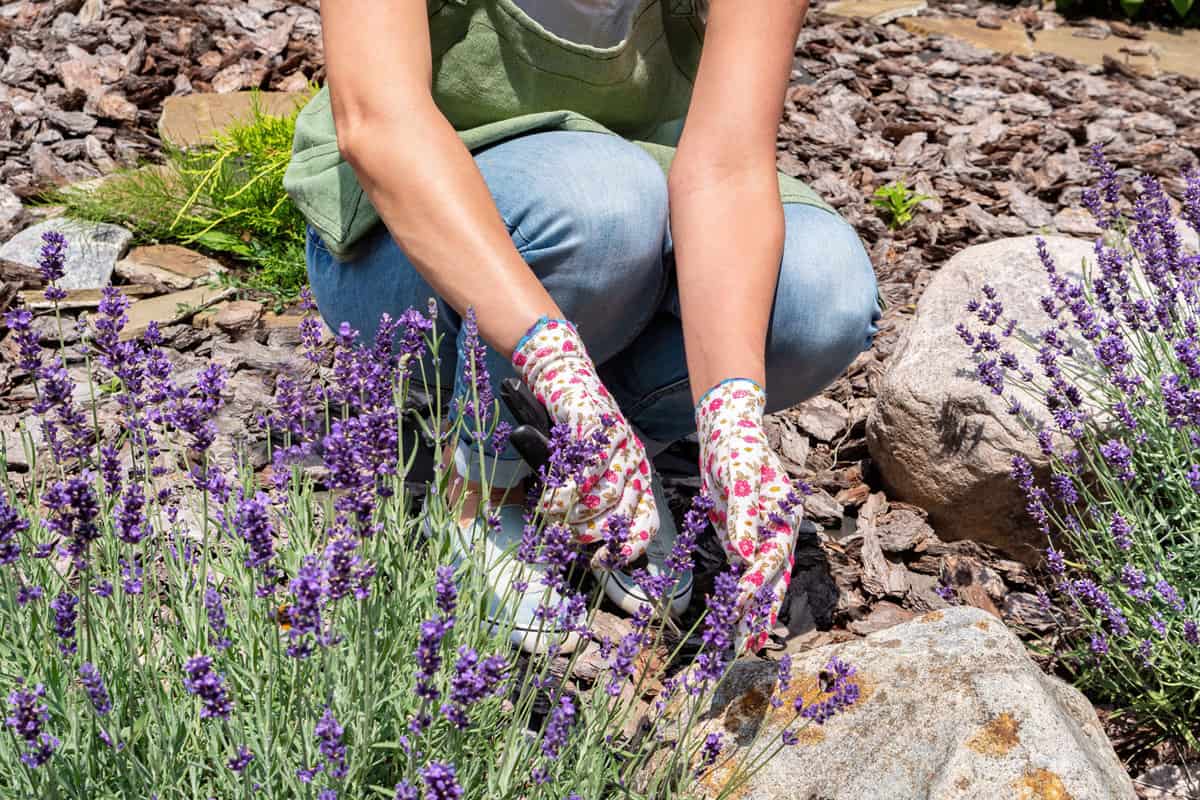
Harvesting & Brewing: The best time to harvest lavender for tea is when the buds on the stems have just begun to open. Cut the lavender stems off the plant, leaving a small portion of the stem attached to the bud.
Steep a few buds in boiling water for about 10 minutes.
Drying & Storing: To dry, bundle the harvested stems together and hang them upside down in a dark, well-ventilated area.
This allows the essential oils to flow down into the buds, enhancing their flavor and aroma.
Once dry, carefully remove the buds from the stems and store them in an airtight container.
5. Rosemary
This Mediterranean native improves digestion, boosts memory, and aids in stress relief. It's also rich in antioxidants and anti-inflammatory compounds that can help boost your immune system.
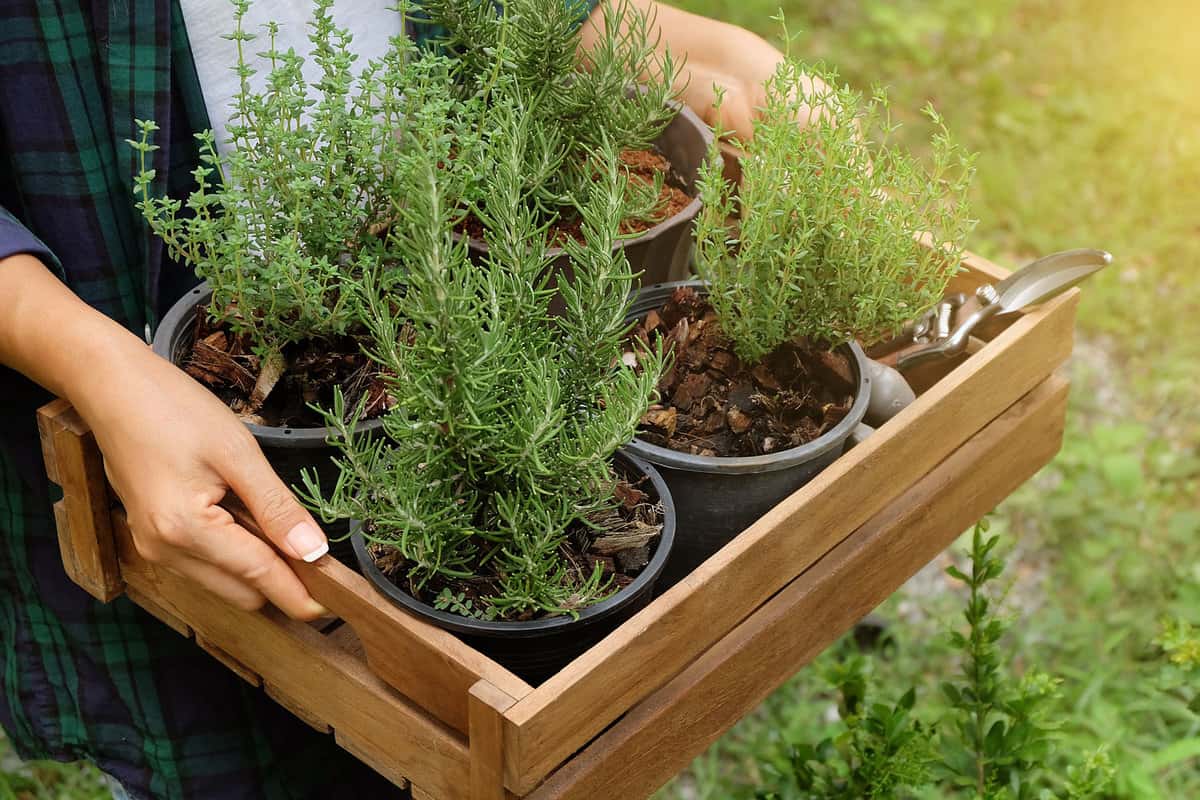
Harvesting & Brewing: You can pick rosemary leaves at any time, although they're most flavorful just before the plant blooms. To make a stimulating cup of rosemary tea, steep a sprig or two in hot water for about 5 minutes.
This will release the essential oils, creating a brew that's fragrant and full of flavor.
Drying & Storing: To dry your rosemary sprigs, hang them upside down in a dark, cool place. This helps to preserve their color and potent aroma.
Once the sprigs have dried, which may take several weeks, carefully remove the leaves from the stem. Store these dried leaves in an airtight container, preferably in a dark place to preserve their flavor and medicinal properties.
6. Echinacea
Echinacea, known for its beautiful pink flowers, is much more than just a pretty face in the garden.

It's a fantastic immune system booster and can help your body fend off colds, making it your best friend during flu season.
Harvesting & Brewing: Echinacea flowers and leaves are best harvested as soon as they open. This is when the plant is most potent and rich in beneficial compounds.
For a strong, therapeutic cup of echinacea tea, steep the flowers and leaves in hot water for around 15 minutes.
Drying & Storing: Dry the harvested flowers and leaves in a dark, dry place. It's important to ensure they're fully dried out to prevent mold during storage. Once dried, store them in an airtight container.
7. Lemon Verbena
This plant makes a refreshing, citrusy tea that aids in digestion, enhances the immune system, and reduces inflammation.

Lemon verbena has properties that can help alleviate respiratory issues and fever, making it a good choice during cold and flu season.
Harvesting & Brewing: You can harvest lemon verbena leaves throughout the growing season. However, for the most robust flavor, try to harvest in the morning after the dew has dried.
Use a handful of leaves for a pot of tea and steep for about 5 minutes. This quick brewing time ensures a delicate, refreshing taste without any bitterness.
Drying & Storing: To dry lemon verbena leaves, spread them out in a single layer in a cool, dark place.
This will help retain their vibrant color and strong citrusy aroma. Once they're completely dried and crumbly, store them in an airtight container.
8. Hibiscus
Its deep, ruby-red color hints at the wealth of benefits it holds. This vibrant plant is high in vitamin C, an essential nutrient that strengthens your immune system, helps your body absorb iron, and promotes healthy skin.

Harvesting & Brewing: Harvest the hibiscus flowers when they're fully open, usually in late afternoon, for the most potent flavor. To brew, steep them for 15–20 minutes in hot water.
Drying & Storing: Dry hibiscus flowers in a cool, dark place. It's important to allow them to dry completely to prevent mold and ensure they preserve their color and flavor.
Once dry, store them in an airtight container to protect them from moisture and light, both of which can degrade the flower's beneficial properties and vibrant color.
9. Fennel
This sweet, anise-flavored plant aids in digestion, reduces inflammation, and may even soothe menstrual cramps. The herb is also known to help with constipation, bloating, and even hiccups.

Harvesting & Brewing: Harvest the feathery leaves of fennel anytime during the growing season.
For the best flavor, try to pick them in the morning when their essential oils are at their peak. To brew, steep a handful in hot water for 5–10 minutes, allowing the sweet, licorice-like flavor to fully develop.
Drying & Storing: Spread them out in a single layer in a dark, cool place to dry.
Once they're fully dried and brittle to the touch, store them in an airtight container to keep their flavor and beneficial properties intact.
10. Sage
This earthy herb has a range of health benefits, including boosting cognitive function, aiding digestion, and providing anti-inflammatory effects.
Sage can boost cognitive function, helping to improve memory, concentration, and attention.
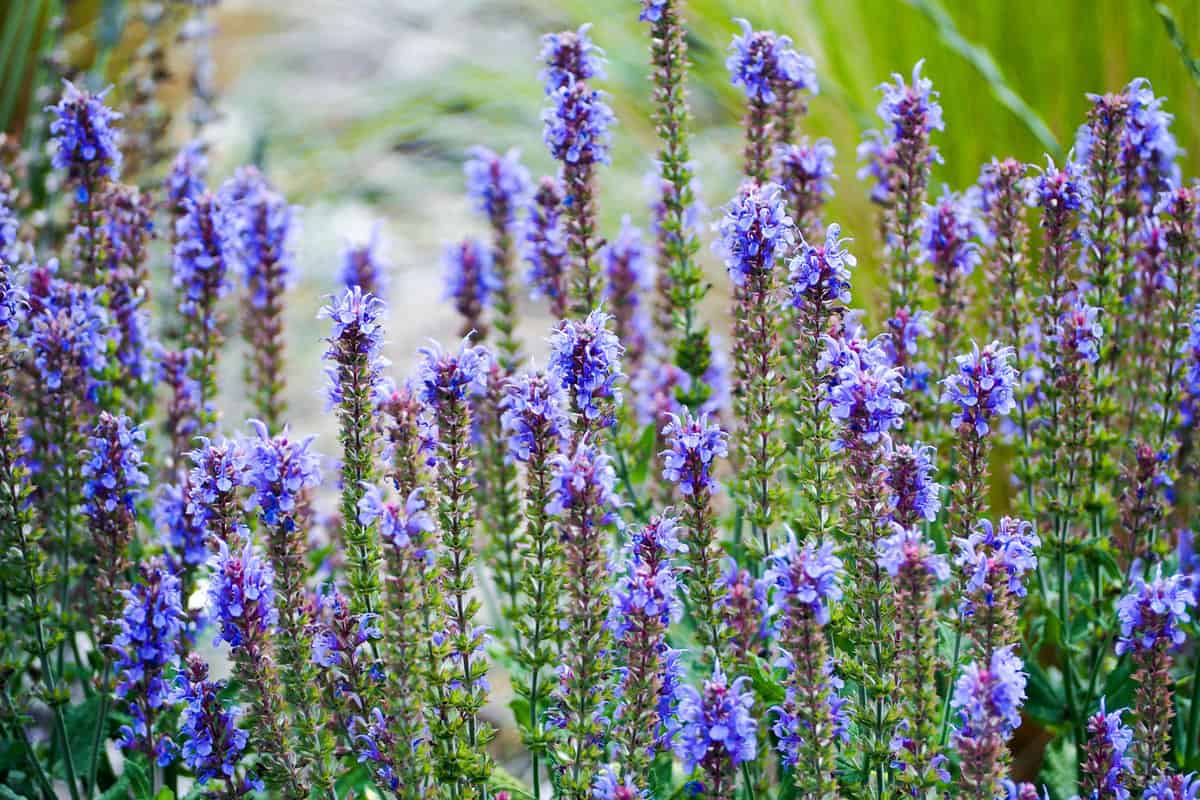
It's also been associated with supporting brain health and mood, making it a potential ally against age-related cognitive decline and depression.
Harvesting & Brewing: Harvest sage leaves just before or during blooming. That's when they are at their most flavorful and aromatic.
Use a few leaves per cup of tea and steep for 5–10 minutes.
Drying & Storing: Spreadsage leaves out in a cool, dark place. This will allow them to retain their potent flavor and health benefits.
Once they're fully dry, store them in an airtight container, away from sunlight and heat. This will ensure that your sage leaves stay fresh and flavorful for your homemade teas.
Your Health and Happiness with Homegrown Herbal Teas
And there you have it, a guide to creating your very own home-grown herbal tea garden! We've explored a variety of plants, each with its unique flavor and health benefits.
From the calming Chamomile to the immune-boosting Echinacea, the refreshing Peppermint to the vibrant Hibiscus, these plants offer a variety of flavors and health benefits to explore and enjoy.
Moreover, we've delved into the processes of harvesting, brewing, drying, and storing your herbs, ensuring you get the most out of your plants.
By following these steps, you can be sure that your homemade teas are not only flavorful and aromatic but also brimming with health-enhancing properties.
Start planting your tea garden today and enjoy the unparalleled joy of brewing your very own homemade teas.
Read more:
